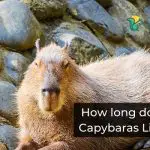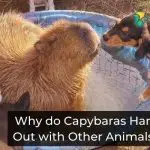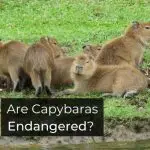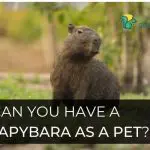Giant Water Hamster(Capybara) | Lifestyle and Living
Do you know about the giant water hamsters? They are also known as capybaras.
Capybaras are large, always socialize with a group from 10 to even 100 individuals, and do not eat more than grasses and grains. These big hamsters have a different way of the reproductive system too, which is interesting to learn about.
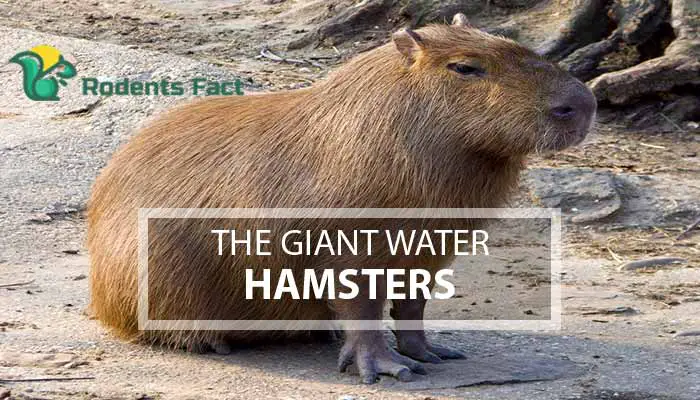
In this article, we will discuss everything about the giant water hamsters, their body description, how they socialize, and how their reproductive system works.
What are Those Giant Hamsters Called?
These giant hamsters are known as Capibaras. This name came from Tupi ka’apiuara, a complex agglutination of leaf, slender, eat, and a suffix for agent nouns.
Altogether, this name means “One who eats slender leaves” or “Grass eater”.
This name come from the Greeks and hold a perfect definition of their style and behavior.
Description of the Giant Water Hamster
The capybara, the giant rodent has distinguished body features that a normal rodent family does not have. If you think of its physical features, you will be surprised to learn every part of their body’s structures!
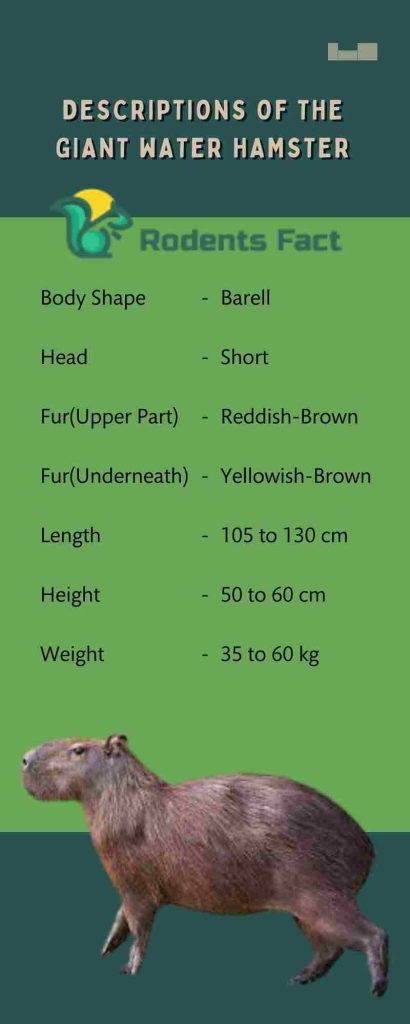
This is the description of their body structure-
- Capybara has a heavy, barrel-shaped body.
- It has a short head.
- This giant water hamster has reddish-brown fur on the upper part of its body that turns yellowish-brown underneath.
- The sweat glands of the capybara can be found on the surface of the hairy portions of its skin.
- The length of this giant rodent animal is around 105 to 130 cm (3.45 to 4.35 ft) and its height will be around 50-60 cm (20-22 inches).
- The weight of the giant water hamster is around 35-60 kg (77-140 lb).
Diet and Predation of Giant Water Hamster
This water rodent is known as herbivores, which means they depend mainly on grasses and aquatic plants. Also, they eat fruit and tree bark too.
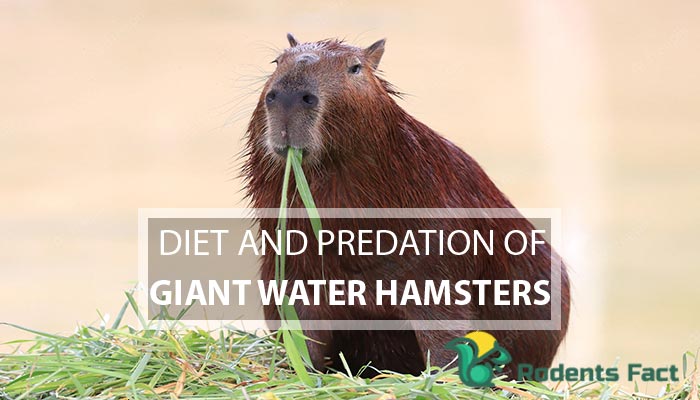
They do not eat relentlessly everything. This is why they are known as selective eaters too. They eat different food for different seasons. Here is the food they eat in different seasons-
- The water hamsters eat a greater variety of plants during the dry seasons.
- They eat grass in the wet seasons.
Now, why don’t capybaras eat plants in the wet seasons? Because the plants they eat in the summer season lose their nutritional value in the wet season. And as capybaras are selective when eating food, they will avoid eating less nutritional food.
Now, do you know these giant water hamsters are autocoprophagous? This means they will eat their own feces as a source of bacterial gut flora. This helps them to digest the cellulose in the grass which creates a normal diet for them.
Unlike other little hamsters, capybaras are a little bit unknown to insects. Now, what insects do hamsters eat? The giant water hamster does not eat those insects.
Socialism of Capybaras
These giant water hamsters are commonly seen in groups of 10-15 individuals. In that group, there will be two to three adult males, four to five females all adults, and the remaining ones are juveniles.
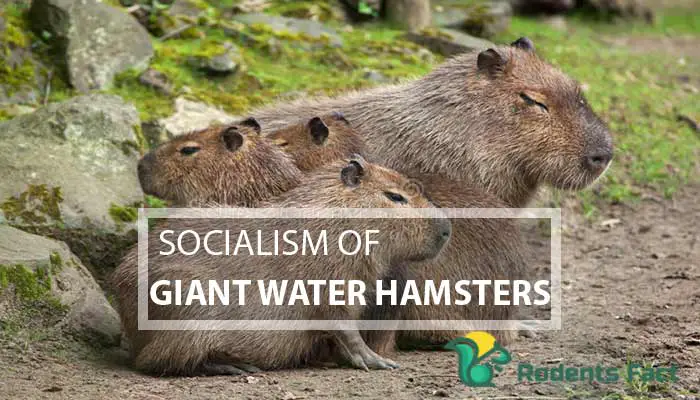
Now, this is a regular day of capybaras to group over and go somewhere. But there can be around 100 capybaras socializing together in the dry season too. Like small hamsters, the giant male rodents establish social bonds and dominance over others.
If anyone tries to make a threatening move to the capybaras, they may face dog-like barks from the capybaras.
Reproduction System
A normal giant water hamster’s reproduction system is as like a small hamster’s reproductive system. When the female capybara is in estrus, its scent changes subtly. The nearby male giant hamsters then begin to pursue.
When the female and male hamster starts mating, the female has the advantage of mating choice. She can submerge or leave from water at any time (The water hamsters mate in the water).
On the other side, the dominant male has the advantage of mating with female hamsters. They are highly protective of the females, but can not prevent some of the subordinates from copulating.
The giant water hamster’s gestation is 130 up to 150 days and produces litters of three to four on average. They do the mating in water, but when the birth time comes, they do it in the ground.
Final Words
The giant water hamsters are one in a kind. They are cute, big, and friendly to others. But recently, the number of capybaras is getting lower than usual, which is a matter of concern.
We have seen extinct giant hamsters before, but now these water hamsters are on the verge of extinction too. So, effective measures should be taken against these giant hamsters. Or else, we have to lose them like other unique animals too.

